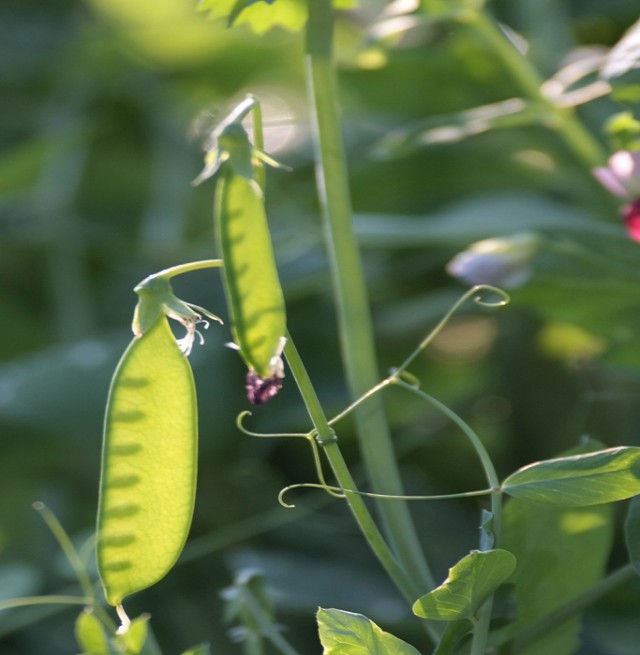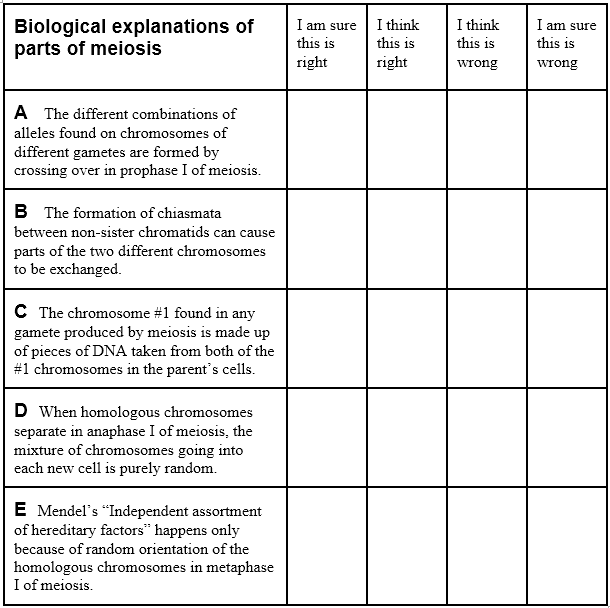Meiosis.

The remarkable breeding experiments carried out by Gregor Mendel between 1856 and 1863 are now considered to be the origins of modern genetics. It's easy to overlook the brilliance of Mendel's data analysis today as his conclusions seem so simple and obvious now we know about chromosome movements during meiosis. At the time he didn't and other scientists were researching other ideas of inheritance.
After an introductory presentation students assess their knowledge of meiosis with some diagnostic questions. Following this they make some structured notes about how meiosis, chromosomes and inheritance are connected. A final review of the diagnostic questions is included to assess learning.
Lesson Description
Guiding Questions
Why are brothers and sisters different from each other?
What causes gametes to be so varied?
How does meiosis promote variation?
Activity 1 Gregor Mendel - The father of genetics
Look at this Introduction to Mendel's Laws presentation to review Mendel's work on Peas.
Mendel made careful observations of over 30000 pea plants but at the time no biologists realised that his discovery in peas could be applied to inheritance in all living organisms.
Think carefully about the diagnostic questions in the table below and decide if you believe the explanations yourself

Activity 2: Crossing over and independent assortment in meiosis
The way that the chromosomes move in meiosis was proof of Mendel's ideas. Using a text book and another other notes complete the Students' Worksheet - meiosis and variation below about the stages of meiosis and the ways in which variation is promoted by this process.
Diagram of crossing over made from a microscope image of two chromosomes during meiosis. Click icon to view.

Activity 3: Review the diagnostic questions.
Having completed this work ask the questions,
- "Have your answers to the table of diagnostic questions changed?"
- "What have you learned, exactly?"
- "Are there still any unresolved aspects of the points?"
A surprising thing about Mendel's work is that the 3:1 ratios in his data have been analysed and they seem too good to be true!
Was he guilty of bias and selection, 'cherry picking' his data? Is it possible that his monks who counted the pea phenotypes were frightened to tell him bad results?
When it comes to the genetics of pea plants, researchers today have found that many of the genes used in this early genetics work are not actually independently assorted in the way Mendel describes.
Mendel didn't know anything of DNA, nor that chromosomes are separated in meiosis. Now we know that genes are found on DNA, in chromosomes which form gametes by the process of meiosis
Now we know that genes are found on DNA, in chromosomes which form gametes by the process of meiosis we have a much more thorough understanding..
Teachers notes
This lesson gives the students an opportunity to make links for themselves between the ideas of Gregor Mendel and the way the chromosomes move during the process of meiosis. By following the activities in the order shown students should end the lesson confidently able to explain the relationship between meiosis and independent assortment.
The table of Questions are best used near the beginning of the lesson to assess the students understanding, and to give students time to thing about their understanding.
It is possible to use this as a discussion in pairs or individually. Statements A, B and C are uncontroversial, although they require a good understanding of meiosis. Statements D & E should provoke some discussion. On a surface level they are true but each one is also partly incomplete.
The worksheet of structured notes will help to guide students to research the specific information needed to fully understand the diagnostic questions. Reviewing these statements in activity three should help to reassure students and teachers that learning has taken place.
There are model answers to the worksheet here: Meiosis model answers
One excellent way of using the Diagnostic Questions is to make a slide on an interactive whiteboard and put dots into the corresponding boxes of the table for each student of the class.
Repeat the same thing with a different colour of pen at the end of the lesson.
This article makes good background reading and could make great extension work for faster students: A particularly well written account of genetics in the early 1900's by Reginald Punnett (founder of the punnett square !)

 IB Docs (2) Team
IB Docs (2) Team
